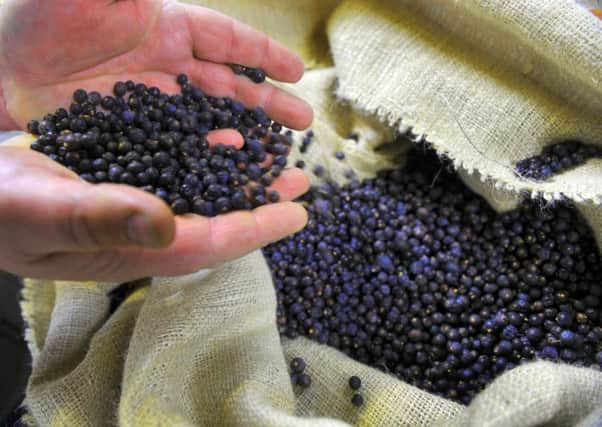Country & Coast: All too rare shrub has national security role


Kisdon stands at the head of Swaledale, separating the villages of Keld and Muker by way of one of the best walks in the whole national park.
A large factor in the hill’s appeal is the striking expanse of juniper on its western flank.
Advertisement
Hide AdAdvertisement
Hide AdLimestone areas are particularly favoured by evergreen juniper, since the shrub thrives best on well-drained soils, and the two other colonies in the Dales are on limestone escarpments at Harkerside Moor above Grinton Gill, further down Swaledale, and on Moughton between Crummackdale and Ribblesdale.
Even if you would not recognise a juniper bush if you stood next to one you would probably recognise the flavour of its blue-black berries - they give the distinctive taste to the best-known brands of gin. In fact the French word for juniper berry, genièvre, is how gin got its name.
The berries are also used to flavour game dishes like venison and pheasant.
Today gin is made with berries imported from Eastern Europe, those from Macedonia and Albania being particularly perfumed and sought-after.
Advertisement
Hide AdAdvertisement
Hide AdThe best excuse you can have for quaffing gin is that the berries were once used to ward off typhoid, cholera and a wide range of sickness conditions.
Farmers sometimes use sprays of juniper as a substitute for barbed wire, so sharp and firm are the needles. This quality is the reason why the Ministry of Defence’s Chemical and Biological Defence Establishment at Porton Down in Wiltshire has the UK’s biggest area of juniper. Here, some 14,000 bushes are planted tightly together as a buffer zone to keep out any intruders who manage to scale the site’s perimeter fence.
Our second largest colony is on the south side of High Force waterfall in Upper Teasdale, which used to be in the old North Riding until 1974.
Nationally, however, there are now fewer juniper bushes than there were 50 years ago because the demand for grazing land has increased. This has especially been the case in the Yorkshire Dales, which is why a decade ago the national park began a project to restore junipers in a number of areas.
Advertisement
Hide AdAdvertisement
Hide AdSeeds taken from Kisdon and Moughton were grown in a nursery on the Scottish borders and then replanted close to the original colonies.
Only about ten per cent of juniper seed is in good enough condition to germinate, and in some places 98 per cent of them are judged to be “empty”.
By comparison, trees like oak and sycamore have an almost 100 per cent success rate.
Fortunately, the Forestry Commission found a non-destructive x-ray test to find the small proportion of juniper seeds worth planting.
Sadly, though, the discovery of a fungal disease in the Harkerside Moor and Moughton colonies forced the national park to put the replanting project on hold.